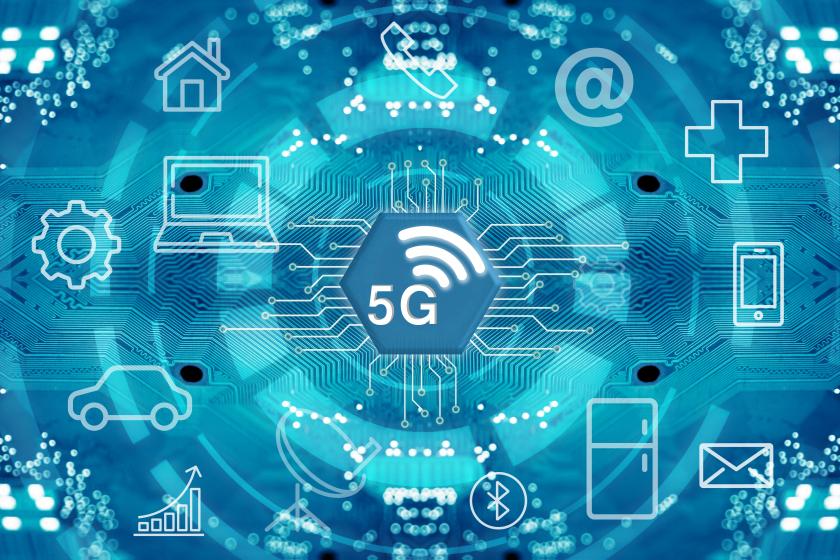What Is Standalone 5G and How Will Network Operators Use It?
Networks running standalone 5G could deliver faster speeds with lower latency for tasks such as monitoring the health of government vehicles and tracking edge devices.
June 1, 2023

What is standalone 5G?
Networks running 5G are bringing faster speeds to smart cities, healthcare, and finance. But now, a type of connectivity called standalone 5G (5G SA) that uses a 5G core is expected to bring faster speeds and lower latency, which are important for scaling the Internet of Things. Additionally, there are several areas of government in which standalone 5G will play a part, including the postal service and emergency management.
What’s the difference between standalone and non-standalone 5G?
Standalone 5G comprises a 5G radio access network (RAN) and a 5G core, which manages the connections between users and a network. It differs from non-standalone 5G (5G NSA), which uses a 4G core.
In general, 5G also accommodates local cloud or multiaccess edge computing, according to Rajeev Gopal, vice president of advanced systems at Hughes Network Systems. Specifically, a standalone 5G network brings fewer bugs or weaknesses than non-standalone 5G (5G NSA), which uses existing 3G and 4G networking architecture, according to Gopal. “It’s a clean implementation, and you get the best of what the 5G technology can offer in this area,” Gopal tells Network Computing.
In fact, standalone 5G is “pure 5G” and does not have to be backward-compatible, Gopal said. “It is not encumbered by or compromised by 4G limitations, so it has the best of 5G embedded in the standalone configuration.”
How is standalone 5G deployed?
SA 5G is also considered a self-contained deployment. “It enables 5G antennas to work in standalone mode without a 4G anchor, providing better radio bandwidth usage and low latency (up to <1ms) on the radio channel by the use of dynamic numerology,” explains Yan Grunenberger, software engineer at Working Group Two (Wgtwo). “Basically, the radio resource is controlled in a very fine-grained manner.”
Wgtwo is an organization that offers a cloud-native mobile core. "The combination of a new core and new antennas is a good fit for organizations with no need of supporting legacy technology (4G) or no preexisting network, as well as organizations with extremely high bandwidth and low latency needs,” Grunenberger tells Network Computing.
Some carriers are now making the transition to standalone 5G. For example, Verizon launched its 5G networks around 2018 using a 4G core. Now 5G SA will use a 5G core. With a 5G core, network operators build an entire network for 5G workstreams, from device to radio access network to core, according to Verizon. The faster download speeds and larger capacity enable ultra-low latency communication and machine-type communications required for IoT.
About one-fifth of mobile network operators are using 5G SA, according to the Global Mobile Suppliers Association (GSA), a not-for-profit organization that supports companies in the mobile ecosystem. Of 524 operators investing in 5G networks, 115 operators have infused funds in 5G standalone for public networks, according to the GSA’s April 2023 Summary Report. Meanwhile, 41 operators have deployed or launched 5G standalone on public networks.
"Unlike 5G NSA that still relies on a 4G LTE core, 5G SA uses a dedicated 5G core that can unlock capabilities like faster upload speeds, ultra-low latency, ultra-high reliability, and edge functions,” Jason Sikes, AVP Device Architecture at AT&T, wrote in a blog post. “This technology will be key to business opportunities like the next generation of connected cars.”
How can standalone 5G enable predictive maintenance?
Government and commercial enterprises use 5G SA to locate equipment more precisely in a warehouse or factory, Gopal explains. “Within a factory or warehouse, their location has to be carefully monitored so 5G provides that kind of precision, which was missing in earlier networks,” Gopal says.
In addition, 5G allows aircraft maintenance workers in the military or commercial airlines to collect data on the health of aircraft equipment in seconds or minutes instead of hours and perform predictive maintenance. They can transmit data for observation and monitoring quickly next to the plane rather than having to walk or drive to the location of physical databases, Gopal says.
This connectivity also can aid a fleet of postal vehicles or delivery trucks. Hundreds of thousands of postal vehicles can use 5G connectivity to transit maintenance data, according to Gopal.
“They use [a 5G-connected] device, and immediately all the diagnostics are collected and sent to the server, and the server can provide the feedback whether any maintenance is needed or not,” Gopal says.
5G also enables automation for monitoring devices to allow a workforce to become more efficient, according to Gopal.
"They don't have to wait for unnecessary or [unexpected] maintenance because we can do a lot of proactive maintenance of devices once we have good network connectivity," Gopal says.
In addition, the open approach of 5G SA creates an integration between network and security operations, he adds.
Meanwhile, the U.S. Dept of Defense is modernizing its army bases and naval air stations, such as the Naval Air Station Whidbey Island near Seattle, using 5G SA, Gopal says.
What's the outlook for standalone 5G?
Expect to see more 5G SA deployment by network operators going forward, according to experts.
“5G NSA is now vastly deployed by the majority of MNOs in the world,” Grunenberger says. “5G SA is starting to get deployed alongside the existing 5G NSA network by some operators.”
“[5G SA] provided better bandwidth for a lower level of radio deployed on the premises compared with a 4G or 5G NSA solution,” he says. “With a single 5G radio plus a 5G SA core, using 4x4 MIMO, we see excellent speed of greater than 1Gbps, something that would be requiring two to three radios in 4G or 5G SA.”
Despite 5G radios being very expensive, Grunenberger sees potential for enterprises adopting 5G SA.
“Certainly, any industry that requires wireless communications and cannot rely on Wi-Fi due to its unlicensed nature could see 5G SA as an expensive but very reliable replacement,” Grunenberger says.
AT&T plans to broadly launch 5G SA connectivity when an ecosystem of devices is ready, according to Sikes. This year it completed what it calls “the first 5G SA Uplink 2-carrier aggregation data call in the U.S.” It combines frequency bands to offer more bandwidth and capacity.
Meanwhile, T-Mobile calls 5G SA the future of wireless because of its faster speeds and lower latency. It also has aggregated channels for 5G SA in partnership with Ericsson, Nokia, Qualcomm Technologies, and Samsung.
Related articles:
Read more about:
5GAbout the Author
You May Also Like




